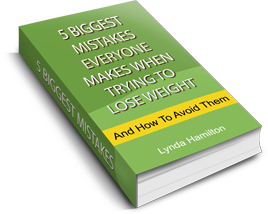The Power of Legumes
What are Legumes?
Legumes (also known as pulses) include all types of beans, peas, lentils and chickpeas and come in a variety of forms – dried, canned, cooked and frozen. They contain a wide variety of nutrients and are a very healthy and economical food for everyone to include as part of a balanced diet.
There are many different varieties of legumes including:
- baked beans,
- butter beans,
- cannellini beans,
- kidney beans,
- mung beans,
- soy beans,
- chickpeas,
- split peas,
- lentils
Why Should I Have Them?
Compared with other plant foods legumes are higher in protein, which make them an ideal base to a vegetarian dish or a substitute for meat. They are high in dietary fibre which helps to keep our bowels healthy. They are also a good source of soluble fibre which can help lower cholesterol levels. Legumes are also have a low Glycaemic Index, which means they are broken down slowly, leaving you fuller for longer and give you sustained energy throughout the day. Legumes are also very cheap to buy!
Overall Health Benefits Include:
- Improve weight management
- Improve cholesterol levels
- Lower risk of heart disease
- Improve blood glucose levels
- Reduce the risk of developing type 2 diabetes
- Reduce the risk of some cancers
- High in B-group vitamins, iron, calcium, phosphorous, zinc and magnesium
- Good source of folate, which is essential for women of child-bearing age
- Good source of antioxidants
- Low in saturated fat
How Much Should I Be Eating?
Start this healthy habit today by aiming to enjoy a variety of beans, peas, lentils and chick peas at least 2-3 times each week.
Serve Guide
– ½ cup or 75g of cooked beans, peas, lentils or chickpeas counts as a serve of vegetables
– 1 cup or 150g of cooked legumes or 170g of tofu is a serve as a meat alternative
Soaking dried legumes
To rehydrate dried legumes, use a quick soak method. (Lentils do not need to be soaked before cooking.) Place beans in a large pot with three times the volume of cool water. Bring to a boil for two minutes and then remove from the heat. Cover and let stand for one hour, then drain and rinse in a colander. If you are in a hurry, you can always use canned legumes.
Legumes Ideas
1. Make a curry
Cook 1 chopped onion, 2 crushed garlic cloves, 1 tablespoon yellow curry powder and 1 teaspoon cumin in a little olive oil for 1-2 minutes. Add 1 can tomatoes, 1 can drained chickpeas and 500g chopped sweet potato. Bring to the boil. Reduce heat to low and simmer until sweet potato is soft
2. Boost Your Salad
Use four bean mixes as a salad base and add lots of vegetables and a little oil-based dressing
3. Add to soups
Lentils and chickpeas are a delicious addition to any soup.
4. Mash it up
Use chickpeas when making mash instead of potatoes as a tasty low-GI alternative.
5. Nutritious snacks
Small tins of baked beans make a great snack, a delicious breakfast served on toast or a great addition to a toasted sandwich. Or you could Snack on ‘chicknuts’ – oven roasted chick-peas
6. Add legumes to your favourite dishes
Dried or canned legumes can be easily incorporated into your favourite dishes, like spaghetti bolognaise casseroles, curries, lasagna or tacos
7. Replace your mayonnaise
Spread sandwiches with hummus (chickpea purée) instead of mayonnaise.
By Alexander Hyde Page (APD)
For more information visit: http://www.glnc.org.au/resources/publications/






 Follow Us On Twitter
Follow Us On Twitter Like Us On Facebook
Like Us On Facebook Watch Us On YouTube
Watch Us On YouTube
Leave a Reply